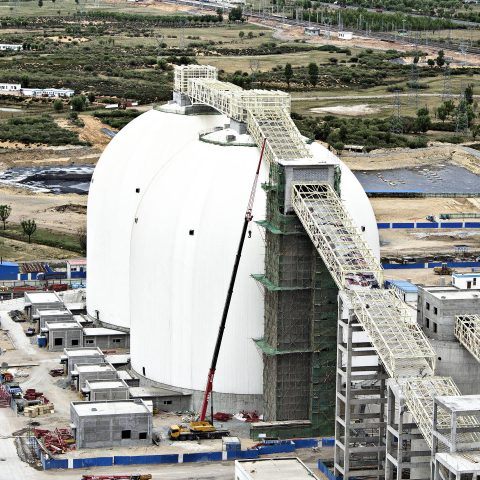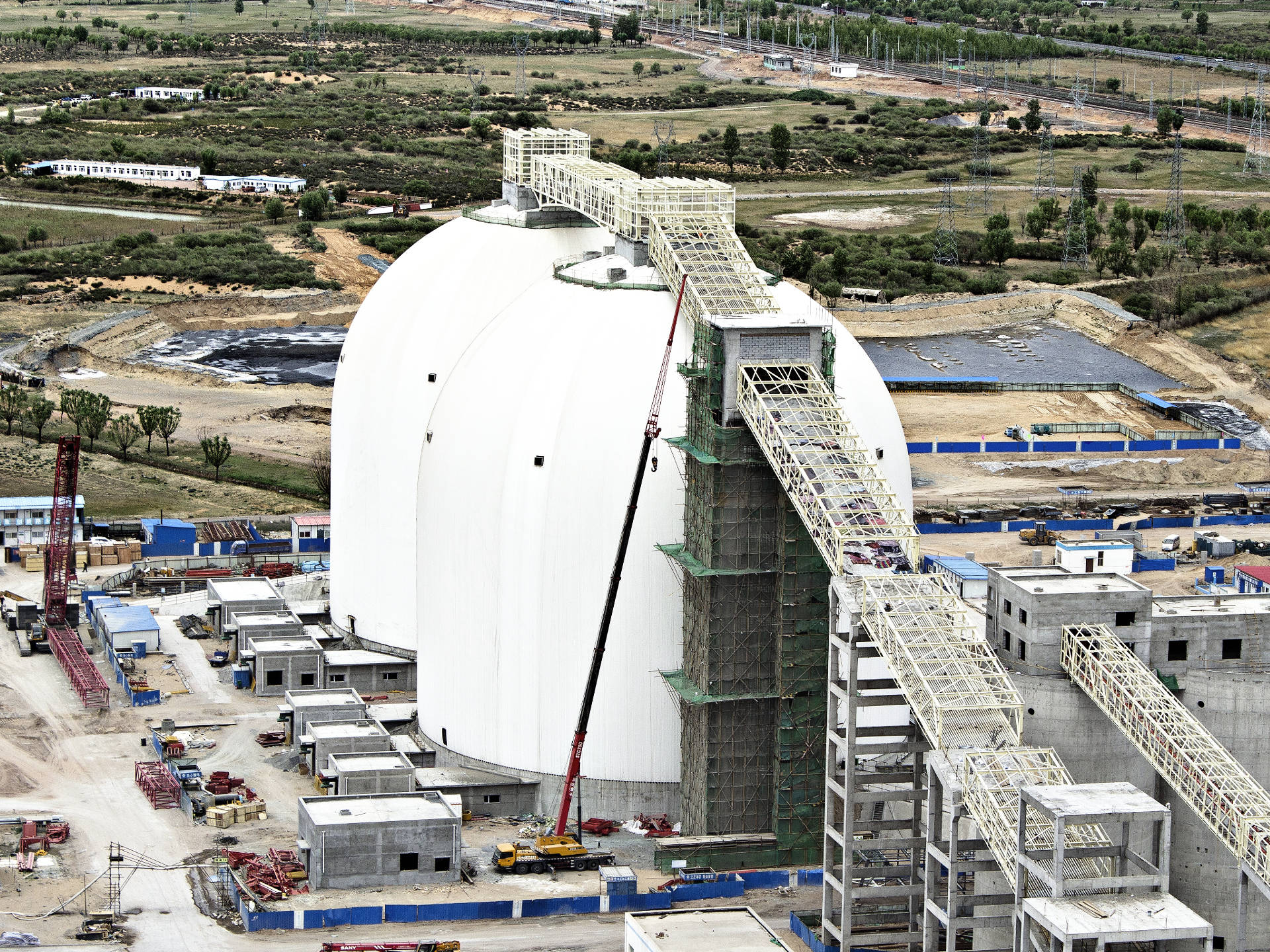Scope of Work
| Domes | Height | Diameter | Capacity |
|---|---|---|---|
| #559 | 170ft | 177ft | 60,000t |
| #559 | 51.8m | 53.9m | 60,000t |
| #560 | 170ft | 177ft | 60,000t |
| #560 | 51.8m | 53.9m | 60,000t |
| #561 | 170ft | 177ft | 60,000t |
| #561 | 51.8m | 53.9m | 60,000t |
Moving more coal. Faster.
China Coal opts for six domes with live-reclaim systems that process 60,000 metric tons of coal at each silo every three days
When engineer Bradley Bateman met with management at China Coal, it was clear what the company wanted: a high live-reclaim system at an economical price—and good looks didn’t hurt either.
China Coal sought storage facilities for both its Hulusu and Menkeqing coal mines, located fifteen miles apart in north China’s Inner Mongolia province. Based on “their ability to keep out outside moisture,” Bateman, the project manager, said a series of domes was a more economical solution than traditional silos. And in the land of the yurt, another factor “was the aesthetics; it was the way they look,” he said.
Today visitors to one mine will see three identical domes housing 60,000 metric tons of coal apiece and in the distance three more identical domes visible at the other mine. But what visitors won’t see is an innovative material-handling system inside the domes that gives China Coal what it wanted most: the ability to move product and move it fast. As more and more Chinese plug in their phones and devices everyday, power companies are relying on and demanding coal as an energy-source generator at power plants, and China Coal is ready to sell.
“(China) is an emerging country, and they have an energy shortage—that’s why companies like this are developing in this region,” Bateman said.
Inside each dome, a full hopper system similar to a series of funnels situated side by side allows coal to flow through the structure under its own weight rather than by loader. “Inside this dome it’s a 100-percent live-reclaim system, which is not new to the industry, but on this magnitude, it’s pretty new,” Bateman said, adding that this design allows each dome to be completely emptied every three days.
Other design details also add value. The PVC membrane outside the dome prevents moisture from entering and contributing to spontaneous combustion. Secondary explosions—the kind caused when initial explosions shake loose accumulated coal dust—are less likely because the support-free domes have no ledges for dust to build up. The domes’ design also allows China Coal to render the pile of coal inert by sealing the top and bottom to cut off oxygen sources and by pumping nitrogen to lower the oxygen level.
At each site, Dome One, located closest to the mine, houses coal coming fresh from the mine until exiting the dome, passing through a cleaning and washing process before being milled to achieve the right-sized pieces. From there coal is dumped via conveyor into Domes Two and Three, where it later exits the structures in one of three tunnels and is transported to trains waiting just outside.
Handling the coal in this way allows China Coal to process its product faster. It’s a pace comparable to the one Dome Technology set during the engineering and construction process, which lasted just 18 months. “It was a fast-paced schedule—very aggressive—and we met their deadlines,” Bateman said.

